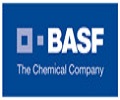-
Email Us
- Top Reports
Global Vertical Farming Market Competitive Environment 2025-2032
Price
Single User License 3300
Multi User License 6000
Corporate License 7200
The Vertical Farming market is rapidly emerging as a transformative solution in the agricultural sector, addressing significant challenges posed by urbanization, climate change, and food security. As the world's population continues to soar, the demand for fresh, locally sourced produce has never been greater, making vertical farming a pivotal player in sustainable food production. This innovative farming technique utilizes vertically stacked layers to grow food in controlled environments, typically integrated with advanced technologies such as hydroponics, aeroponics, and artificial lighting, allowing crops to flourish without the need for arable land. According to a newly published report by STATS N DATA, the current size of the vertical farming market is valued at approximately USD 3 billion, showcasing a robust growth trajectory spurred by increasing investments and technological advancements.
Recent trends indicate that the vertical farming market is projected to grow at a compound annual growth rate (CAGR) of around 25% over the next decade, driven by urbanization and the rising adoption of smart farming practices. Among the key market drivers are the increasing need for food security, especially in densely populated urban areas, and the quest for sustainable agricultural solutions that minimize water usage and eliminate the need for harmful pesticides. However, the market also faces certain restraints, such as the high initial setup costs and energy requirements associated with operating vertical farms. Despite these challenges, the opportunities within the vertical farming sector are vast, including the potential for enhanced crop yields, year-round production, and reduced transportation costs, aligning perfectly with the growing consumer preference for fresh, organic, and locally grown food.
Technological advancements continue to play a critical role in shaping the vertical farming landscape, with innovations in automation, robotics, and data analytics optimizing operational efficiencies and maximizing yields. As new technologies emerge, they provide farmers with invaluable insights into crop health and growth patterns, ultimately leading to improved productivity and sustainability. In conclusion, the vertical farming market stands at the forefront of agricultural innovation, promising not only to alleviate some of the most pressing challenges faced by traditional farming but also to revolutionize the way food is grown and consumed worldwide. With its impressive growth trajectory and the potential for continued innovation, vertical farming is poised to play a crucial role in the future of sustainable agriculture.
In today's fast-paced market landscape, understanding the emerging trends in the VERTICAL FARMING MARKET is crucial for staying competitive. Our comprehensive market research report, conducted by STATS N DATA, aims to provide investors and organizations with a thorough understanding of the Global Vertical Farming Industry landscape. This report is designed to go beyond conventional data analysis. Moreover, it offers forward-thinking forecasts, predictions, and revenue insights for the period 2024 to 2031. It serves as an indispensable resource for decision-makers seeking to navigate the complexities of this dynamic market.

Market Overview and Trends
This market research study offers an in-depth analysis of the current Vertical Farming industry size. It derives industry insights supported by historical data that meticulously tracks its evolution over time. This thorough examination provides valuable insights into how the Vertical Farming Market has developed, Also, it serves as a solid foundation for understanding its present state. By analyzing past trends and patterns, we can better predict future growth and help stakeholders prepare for upcoming changes and opportunities.
Looking ahead, the report presents expert forecasts and a deep analysis of future Vertical Farming Ecosystem and trends. These growth projections provide a clear perspective on the market's anticipated trajectory, helping stakeholders to navigate and capitalize on new opportunities. Similarly, it identifies and analyzes the major drivers for market growth, such as technological advancements and increasing demand in various sectors. Subsequently, it examines potential restraints that may hinder progress, such as regulatory challenges and economic uncertainties.
Furthermore, this report uncovers numerous opportunities for future development, offering a strategic outlook on the challenges and growth avenues within the Vertical Farming Market. Consequently, by understanding these dynamics, stakeholders can make informed decisions and develop effective strategies to succeed in this rapidly changing environment.
Market Segmentation
The Vertical Farming Market is segmented into various categories, including product type, application/end-user, and geography.
The segmentation is as follows:
Type
- Hydroponics
- Aeroponics
- Others
Application
- Vegetable Cultivation
- Fruit Planting
- Others
Note: Market segmentation can be customized upon request to better meet specific business needs and provide targeted insights.
This detailed segmentation helps to understand the diverse facets of the market and how different segments contribute to its overall dynamics. Each market segment is analyzed for its size and growth rate, offering insights into which segments are expanding rapidly and which are maintaining steady growth. This expert analysis helps identify the segments driving the market forward and those with significant potential for future growth.
In addition, the report includes a Vertical Farming Market attractiveness analysis, evaluating the appeal of each market segment. This evaluation considers factors such as market potential, competitive intensity, and growth prospects, providing a comprehensive understanding of the most attractive segments for investment and strategic focus. By identifying these opportunities, investors and organizations can allocate resources effectively and maximize their returns.
Competitive Landscape
Major players profiled in this report are:
- Scatil
- Vertical Harvest
- Gotham Greens
- Sky Vegetables
- Sky Greens
- Farmbox
- Green Sense Farms
- FarmedHere
- Sundrop Farms
- Plantagon
- Sanan Sino Science
- Jingpeng
- Metro Farms
- Nongzhong Wulian
- Garden Fresh Farms
- Greener Roots Farm
- Indoor Harvest
- Urban Crops
- Metropolis Farms
- Beijing IEDA Protected Horticulture
- Mirai
- TruLeaf
- Plenty (Bright Farms)
- Infinite Harvest
- Spread
- Green Spirit Farms
- Alegria Fresh
- GreenLand
- Lufa Farms
- AeroFarms
The competitive landscape of the Vertical Farming industry is constantly evolving, with major players striving to maintain their market positions and expand their influence. It provides a detailed overview of the competitive landscape, listing the key players in the Vertical Farming Market along with their respective market shares. This information offers a clear picture of the key participants and their influence within the industry.
This study conducts a SWOT analysis of the key competitors, evaluating their strengths, weaknesses, opportunities, and threats. This analysis provides a comprehensive understanding of the competitive dynamics and strategic positioning of these major players. By understanding the strengths and weaknesses of competitors, stakeholders can identify areas for improvement and develop strategies to gain a competitive edge.
Recent developments within the Global Vertical Farming Market are also covered, including mergers, acquisitions, partnerships, and product launches. This section highlights significant activities that have shaped the competitive environment and influenced Vertical Farming industry trends. By staying informed about these developments, stakeholders can anticipate changes and adapt their strategies accordingly.
This research report includes a benchmarking analysis of key products and services. By comparing these offerings, it provides insights into the performance and positioning of various products and services, helping to identify best practices and areas for improvement. This analysis is essential for stakeholders looking to enhance their offerings and stay competitive in the market.
Technological advancements and innovations are pivotal in shaping the Global Vertical Farming Market dynamics, and our report highlights the latest developments in this area. By showcasing recent technological progress and innovative solutions, we illustrate how these advancements are driving change and influencing the Vertical Farming industry landscape.
Also, it offers a thorough examination of the overall Vertical Farming industry structure and its dynamics, providing readers with a clear understanding of how the industry operates and evolves. Furthermore, this expert lever analysis illuminates the key components and interactions within the industry, presenting a comprehensive view of its inner workings. By understanding these dynamics, stakeholders can identify opportunities for collaboration and innovation, ultimately driving market growth and development.
Furthermore, the Vertical Farming Market report utilizes Porter's Five Forces Analysis to analyze the competitive landscape. It assesses the bargaining power of buyers and suppliers, the threat posed by new entrants and substitutes, and the degree of competitive rivalry. This framework helps to identify the key factors that impact the industry's profitability and competition, providing stakeholders with valuable insights for strategic decision-making.
Moreover, the report includes a detailed value chain analysis, tracing the journey from suppliers to end-users. This market study-driven analysis provides insights into each step of the process. It focuses on highlighting where value is added and identifying potential areas for efficiency improvements or strategic adjustments. By optimizing the value chain, stakeholders can enhance their operational efficiency and gain a competitive advantage.
Additionally, the report pinpoints key customer preferences and trends, shedding light on what customers seek in products and services. This understanding of customer preferences enables businesses to stay ahead of trends and tailor their offerings to meet evolving demands. By aligning their strategies with customer needs, stakeholders can enhance customer satisfaction and drive business growth.
Regulatory Environment
This extensive report study highlights the key regulations and standards impacting the Vertical Farming Market, providing a comprehensive overview of the legal and regulatory framework that governs the industry. This information is essential for understanding the rules and guidelines that market participants must adhere to. By staying informed about regulatory changes, stakeholders can ensure compliance and avoid potential legal issues.
This report examines the impact of recent regulatory changes in the Vertical Farming industry, analyzing how these changes affect the market and its participants. Moreover, it helps stakeholders to anticipate potential challenges and adapt their strategies accordingly. By understanding the regulatory landscape, stakeholders can make informed decisions and develop strategies to mitigate risks and seize opportunities.
Indeed, this report outlines the compliance requirements for Vertical Farming Market participants, highlighting the necessary steps to ensure adherence to regulations and standards. Understanding these compliance requirements is crucial for maintaining legal and operational integrity in the market. By prioritizing compliance, stakeholders can build trust with customers and strengthen their market positions.
Market Entry Strategy
Entering the Vertical Farming industry can be challenging due to various barriers and competitive pressures. It also identifies the key barriers to entry and challenges for new entrants, offering a comprehensive understanding of the obstacles that must be overcome to successfully enter the industry. These barriers may include high capital requirements, stringent regulatory standards, and intense competition from established players.
Additionally, the report highlights the critical success factors for new Vertical Farming market entrants. These factors encompass elements such as innovation, effective marketing strategies, strategic partnerships, and a compelling value proposition. By focusing on these success factors, new entrants can navigate the complexities of the market and enhance their chances of success.
The report provides strategic recommendations for entering the market. These go-to-market strategy recommendations include actionable insights on market positioning, customer acquisition strategies, and differentiation approaches. These strategies are designed to help new entrants establish a strong presence and competitive advantage in the market. By implementing these strategies, new entrants can overcome challenges and capitalize on opportunities in the Vertical Farming Market.
Economic Indicators and Risk Analysis
Nevertheless, this report analyzes the impact of macroeconomic factors on the Vertical Farming Market, examining how elements such as GDP growth, inflation rates, and employment trends influence market dynamics. Notably, the report analysis provides a comprehensive understanding of the broader economic environment and its effects on the market, helping stakeholders make informed decisions.
Potential risks and uncertainties in the Vertical Farming Market are identified, highlighting factors that could pose challenges to market stability and growth. These risks may include economic volatility, regulatory changes, and market competition. By understanding these risks, stakeholders can develop strategies to mitigate them and ensure resilience in the face of challenges.
Also, the report provides strategies to mitigate identified risks. This impact assessment and mitigation strategy section offers actionable recommendations for managing and reducing risks, ensuring that Vertical Farming Market participants are better prepared to navigate uncertainties and maintain resilience. By proactively addressing risks, stakeholders can protect their interests and drive sustainable growth.
Investment Analysis
This research study evaluates key suppliers and distributors in the Vertical Farming Market, highlighting the major players involved in providing and distributing products. In addition, it offers insights into their capabilities, reliability, and strategic importance within the supply chain. By understanding the supply chain dynamics, stakeholders can optimize their operations and strengthen their market positions.
The report also identifies investment opportunities and provides recommendations, offering insights into areas with high potential for returns. By pinpointing these opportunities, investors can make informed decisions about where to allocate their resources for maximum impact. By strategically investing in high-potential areas, stakeholders can enhance their profitability and drive growth.
This comprehensive report conducts a return on investment (ROI) analysis and financial projections. This analysis helps assess the expected profitability of investments and provides financial forecasts to guide investment decisions. Understanding these projections is crucial for evaluating the potential returns and risks associated with different investment options. By making data-driven investment decisions, stakeholders can maximize their returns and achieve their financial goals.
It majorly includes feasibility studies for potential new projects or ventures. These studies assess the viability of new initiatives by considering factors such as market demand, cost estimates, and potential revenue. By evaluating the feasibility of these projects, investors can make well-informed decisions about pursuing new opportunities. By pursuing viable projects, stakeholders can expand their market presence and drive business growth.
Technological and Innovation Insights
The Vertical Farming Market report discusses emerging technologies and their potential impact on the market, highlighting how advancements in technology are shaping the future of the industry. This section provides insights into new technologies that could disrupt the market and create new opportunities for growth and innovation.
This industry-focused report analyzes the innovation landscape and research and development (R&D) activities within the Vertical Farming Market. By examining ongoing R&D efforts and the overall state of innovation, the Vertical Farming Market report offers a comprehensive view of how companies are driving progress and staying competitive. This data also helps to understand the role of innovation in fostering market development and enhancing product offerings.
Regional Insights
In addition, this analysis extensively covers regional insights into the market, providing a detailed analysis of various geographical areas. Each region is examined to understand its unique Vertical Farming Market dynamics, trends, and opportunities.
North America
The analysis of the North American Vertical Farming Market includes insights into key drivers, challenges, and growth prospects in this region. This section highlights the latest trends and developments influencing the market in North America.
South America
It delves into the South American Vertical Farming Market, exploring the factors shaping its growth and the specific challenges it faces. It provides a comprehensive overview of market conditions and emerging opportunities in this region.
Asia-Pacific
This section covers the dynamic and rapidly evolving Vertical Farming Market in the Asia-Pacific region. It examines the factors driving growth, regional trends, and the potential for future expansion.
Middle East and Africa
It also provides insights into the Middle East and Africa, discussing the unique Vertical Farming Market conditions, growth opportunities, and challenges present in these regions. In addition, it highlights key trends and the impact of regional developments on the market.
Europe
The European Vertical Farming Market is analyzed in detail, focusing on the trends, opportunities, and challenges specific to this region. It gives an overview of the factors influencing market growth and the strategic initiatives driving success in Europe.
Key Questions Addressed in This Report
This detailed report provides thorough answers to several critical questions, ensuring that stakeholders gain a deep understanding of the Vertical Farming Market:
What is the Global Vertical Farming Market size and growth rate during the forecast period?
What are the crucial factors driving Vertical Farming Market growth?
What risks and challenges do the Vertical Farming Market face?
Who are the key players in the Vertical Farming Market?
What are the trending factors influencing Vertical Farming Market shares?
What insights can be derived from Porter's Five Forces model?
What global expansion opportunities exist in the Vertical Farming Market?
Why Invest in this Vertical Farming Market Report
Stay Informed
This exclusive research study provides up-to-date information on the competitive environment, helping stakeholders understand the strategies and market positions of key players.
Access Analytical Data and Strategic Planning Methods
It offers comprehensive analytical data and strategic planning tools, enabling stakeholders to make informed decisions and develop effective market strategies.
Deepening Understanding of Critical Product Segments
This report delves into the details of essential product segments, providing a clear understanding of their performance, trends, and market potential.
Explore Market Dynamics Comprehensively
It examines the various factors that influence market dynamics, offering a thorough analysis of the drivers, restraints, opportunities, and challenges within the market.
Access Regional Analyses and Business Profiles of Key Stakeholders
The major study includes detailed regional analyses and profiles of key stakeholders, providing insights into regional market conditions and the roles of significant market participants.
Gain Exclusive Insights into Factors Impacting Market Growth
It offers exclusive insights into the factors that affect market growth, helping stakeholders to anticipate changes and adjust their strategies accordingly.
To summarize, this comprehensive report equips stakeholders with the knowledge to navigate the Vertical Farming Market effectively and strategically. It also helps them to capitalize on opportunities and mitigate risks in this dynamic and rapidly evolving industry.
Frequently Asked Questions
1 What global expansion opportunities are available in the Vertical Farming Market?
The Vertical Farming report identifies several regions, including North America, Europe, Asia-Pacific, and emerging markets, that present significant growth opportunities. It provides strategic recommendations for companies looking to expand their market presence globally.
2 Who are the major players in the Vertical Farming Market?
The report profiles the leading players in the Vertical Farming Market like Scatil, Vertical Harvest, Gotham Greens, Sky Vegetables, Sky Greens, Farmbox, Green Sense Farms, FarmedHere, Sundrop Farms, Plantagon, Sanan Sino Science, Jingpeng, Metro Farms, Nongzhong Wulian, Garden Fresh Farms, Greener Roots Farm, Indoor Harvest, Urban Crops, Metropolis Farms, Beijing IEDA Protected Horticulture, Mirai, TruLeaf, Plenty (Bright Farms), Infinite Harvest, Spread, Green Spirit Farms, Alegria Fresh, GreenLand, Lufa Farms, AeroFarms providing a comprehensive SWOT analysis for each. It examines their market shares, strengths, weaknesses, and strategies, helping stakeholders understand the competitive landscape.
3 What years does this Vertical Farming Market Report cover?
The report covers the Vertical Farming Market historical market size for years: 2019, 2020, 2021, 2022 and 2023. The report also forecasts the Vertical Farming Industry size for years: 2024, 2025, 2026, 2027, 2028, 2029, 2030, and 2031
4 What challenges and risks do the Vertical Farming Market currently face?
The Vertical Farming Market faces several challenges, such as economic uncertainties, regulatory shifts, and intense competition. The report provides a risk analysis that identifies potential obstacles and offers strategies for managing them.
5 What insights can be drawn from applying Porter’s Five Forces model to the Vertical Farming Market?
The Porter’s Five Forces analysis provides valuable insights into the competitive dynamics of the Vertical Farming Market. It evaluates the bargaining power of buyers and suppliers, the threat of new entrants, the impact of substitutes, and the intensity of competitive rivalry.
6 What are the current trends influencing the Vertical Farming Market?
Current trends include technological innovations, strategic mergers and partnerships, and shifting consumer preferences. The report discusses how these trends are shaping the market and driving growth opportunities.
7 What competitive strategies are key players in the Vertical Farming Market using?
The report analyzes the competitive strategies of major players in the Vertical Farming Market, including mergers, acquisitions, and partnerships. It also looks at product innovations, helping stakeholders anticipate shifts in the market and stay competitive.










